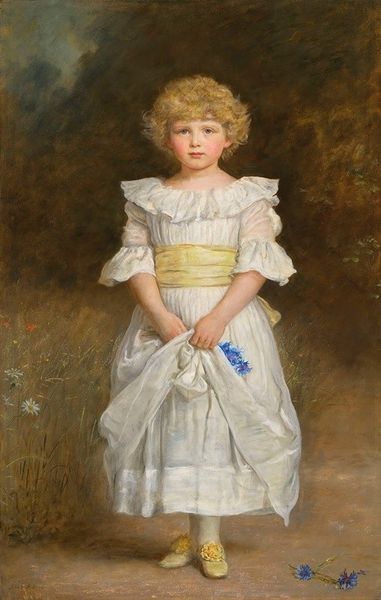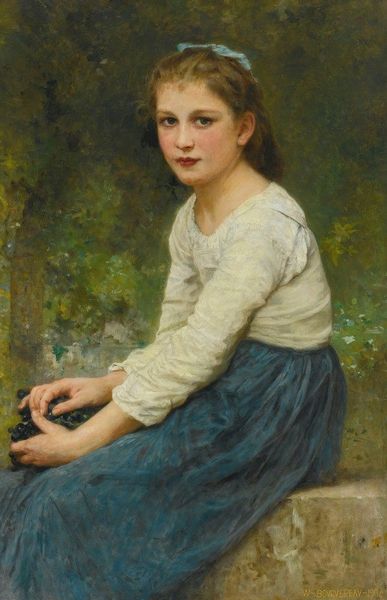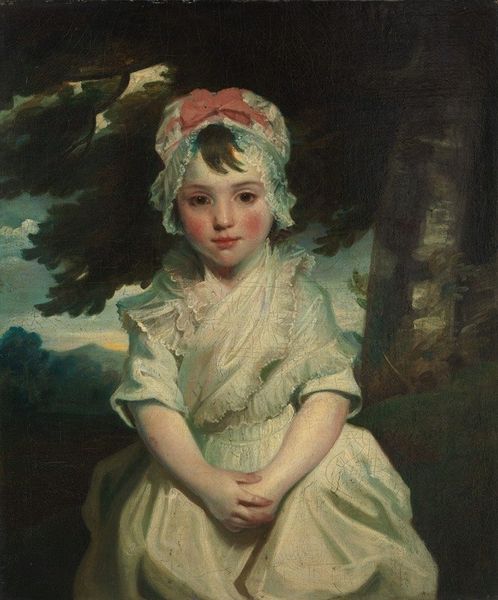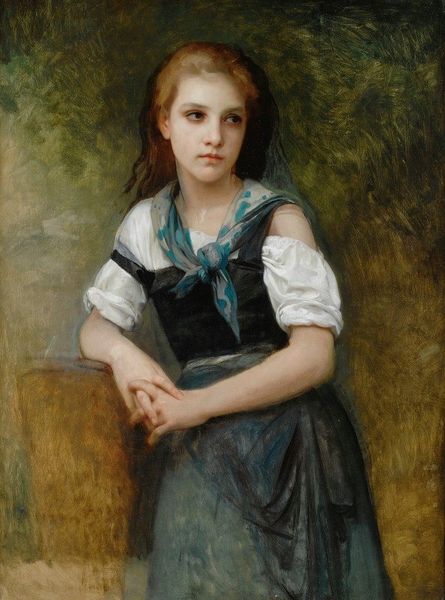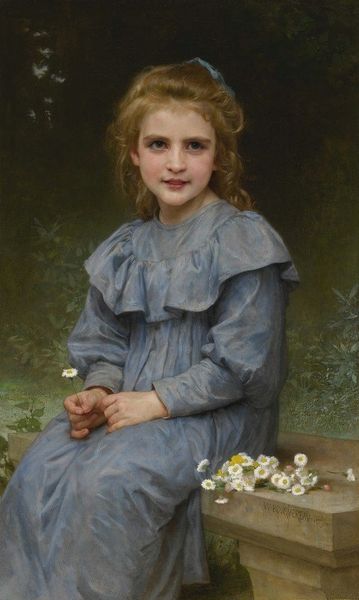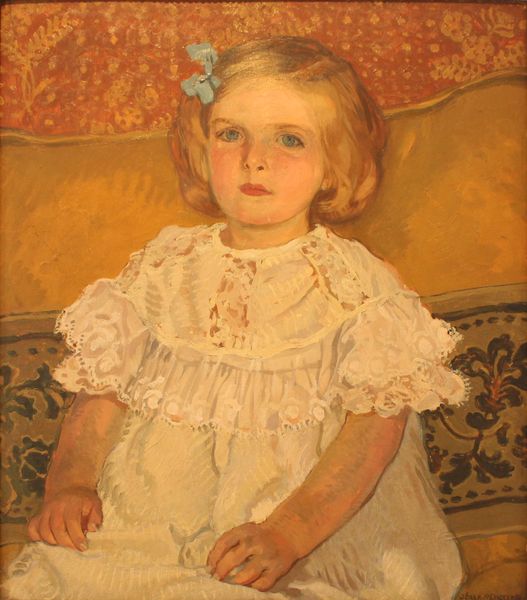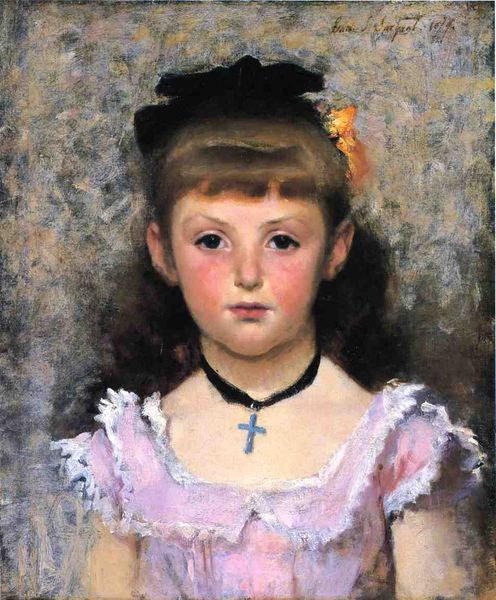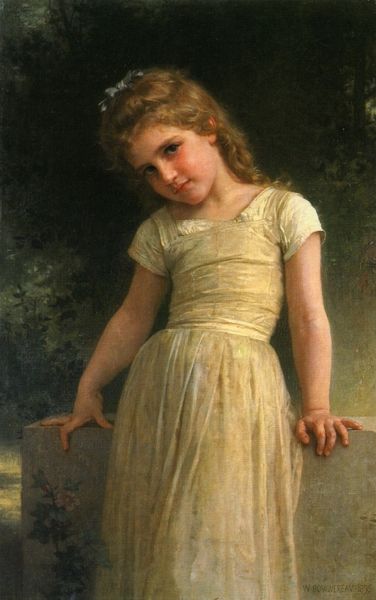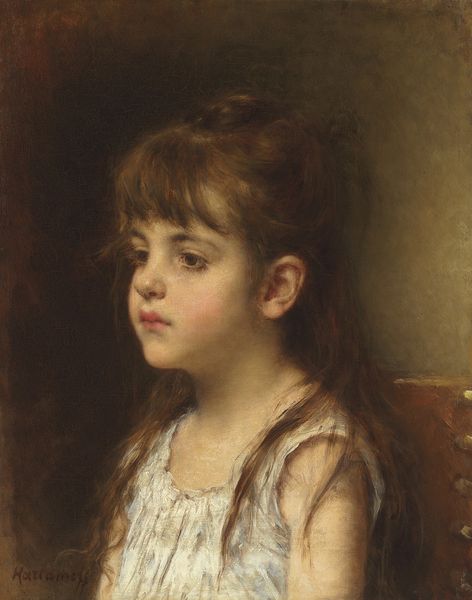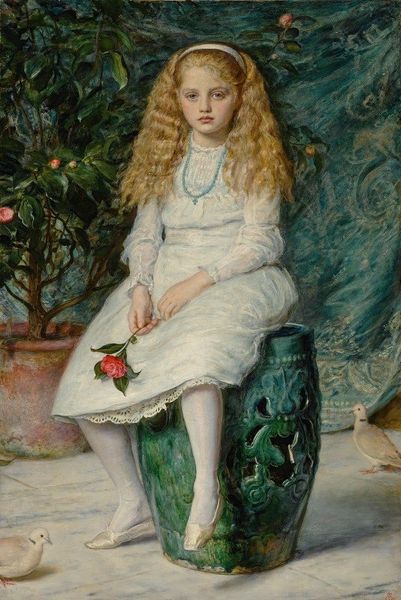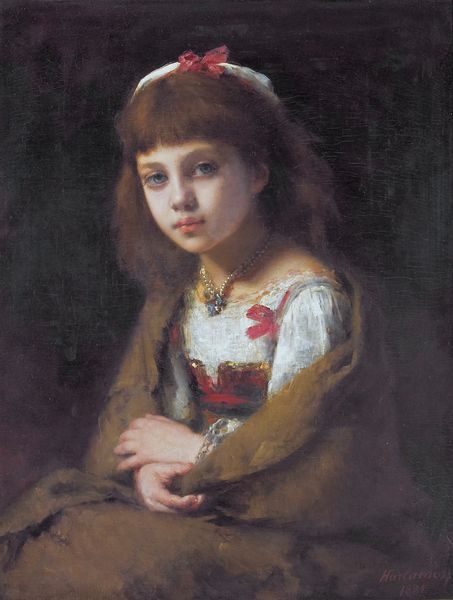
Portrait of Miss Scott, daughter of the Late Thomas Alexander Scott of Philadelphia 1883
0:00
0:00
Copyright: Public Domain: Artvee
Curator: What a serene image! The pale dress, the diffuse light... it almost feels like a dream. Editor: Indeed. We're looking at Sir John Everett Millais's "Portrait of Miss Scott, daughter of the Late Thomas Alexander Scott of Philadelphia," completed in 1883. It's an oil painting, fitting neatly into the Pre-Raphaelite movement's romantic portraiture. Notice the backdrop – the girl’s connection with the surrounding landscape blurs boundaries. Curator: The textures are lovely. The delicate brushwork used to create the fabric of her dress against the slightly looser, more suggestive rendering of the background. What was the significance of the girl's dress in this time period? Editor: The simple white dress with the gold band, indicative of middle to upper-class garments produced en masse as industrialization impacted the garment-making and textile production. Here we also see hand-made, lace embellishments, indicating craft economies that attempted to counter this tide. Note also how Millais’ Pre-Raphaelite associates aimed to recapture perceived craft ideals via their artistic processes. Curator: Absolutely. And this pose, so contemplative. Those carnations also seem symbolic. How are we to see this composition? Editor: Formally, it’s a masterclass in composition. Millais contrasts the soft contours of the girl with the darker, more organic shapes of the foliage. The carnations introduce a delicate splash of color that guides our eye, the light creates depth. Considering how carnations often symbolize love or affection in art, it's tempting to interpret it as a representation of purity and youthful innocence set against the backdrop of inherited wealth. Curator: Fascinating to think about that the art challenges class structures that it reflects via the symbolism. One last thought-- I am still caught by her gaze, that she is also maybe longing or loss. Editor: True. It's a subtle gesture of portraiture on the artist's part. Considering the process of painting and social structures of the time gives this painting layers to read. Curator: A thought-provoking analysis, providing fresh insights into what makes this portrait resonate still. Editor: Agreed. It's precisely the tension between these factors that keeps our perspectives fresh.
Comments
No comments
Be the first to comment and join the conversation on the ultimate creative platform.

